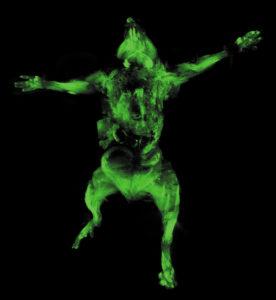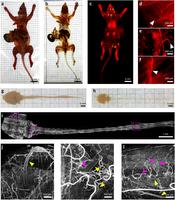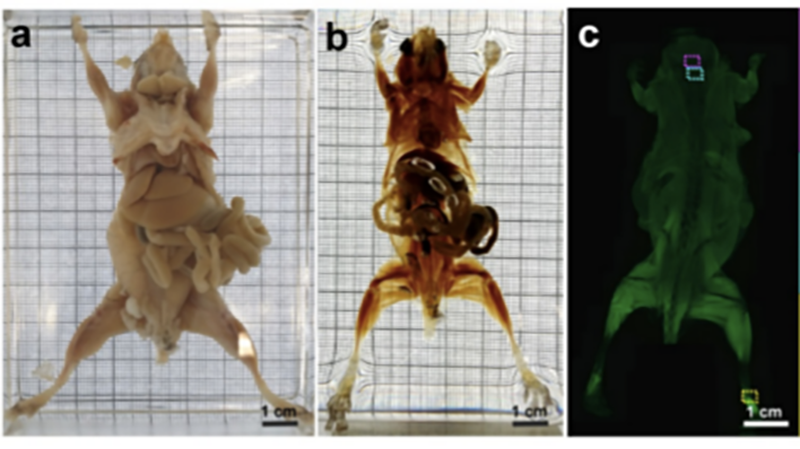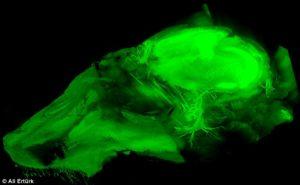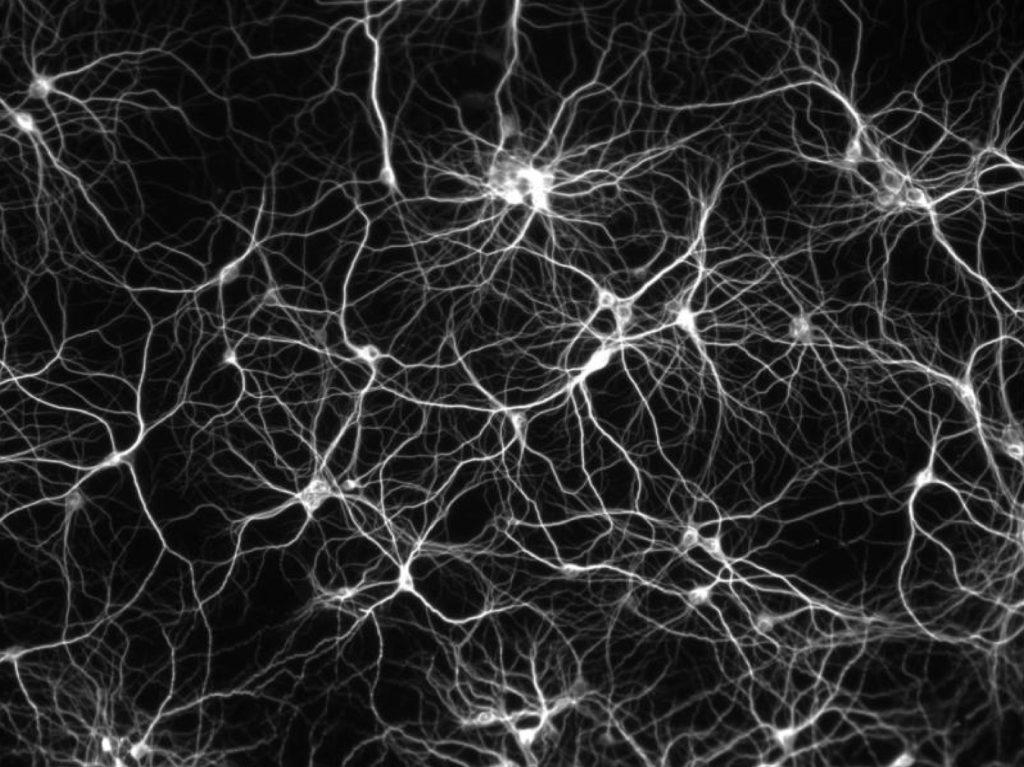The technology is called Ultimate DISCO (uDSICO), which is basically 3D imaging of solvent-cleared organs that eliminates water content, lipids, and pigments from dead animals’ tissues. According to the original study, the technique “leaves the organs and skin intact but transparent, while preserving genetically encoded fluorescent proteins.”
It also implements a widely known method called tissue clearing, which eliminates any water content through dehydration and oily lipids from cell membranes, to observe the internal organs, skin, muscles, and bones of animals.
Essentially, the newly developed 3D imaging technology allows researchers to have an unprecedented understanding of the internal structures of applicable animals. The technology has successfully been tested by Ertürk and his team, which completed its intricate 3D scanning and imaging phases on monkeys and rats. The paper, “Shrinkage-mediated imaging of entire organs and organisms using uDISCO,” was authored by Chenchen Pan, Ruiyao Cai, Francesca Paola Quacquarelli, Alireza Ghasemigharagoz, Athanasios Lourbopoulos, Paweł Matryba, Nikolaus Plesnila, Martin Dichgans, Farida Hellal and Ali Ertürk.Using the 3D scanned images released by Ertürk, researchers were able to observe even the most delicate and sophisticated structures and organs of the animal body, including tissues, bone formations, and muscle alignment.
“We developed a major technology that allows making entire organs and organisms transparent. The new method provides the basis to map neuronal, glial, and vascular connections in the entire lab animals and potentially in deceased human brains,” stated Ertürk.
Once developed to its full capacity, the 3D Imaging technology can be utilized to treat and carry out some of the most complex medical conditions and surgical procedures that are often difficult to deal with premortem.
For instance, several brain damaging illnesses and impaired internal structures of neurons in the brain are difficult to treat with modern surgical methods due to the sheer complexity of the pathways of neurons. With the new technology, doctors will be able to secure a more detailed 3D scan of the brain to strategize surgical operations.
At the moment, this particular technology has only been applied to monkeys and rats. Ertürk emphasized that it can be utilized on postmortem brain studies but not on active patients. Over time, as the technology scales to become more innovative and flexible, commercially available versions will allow surgeons and researchers to use the technology to study brain diseases on postmortem human bodies.
As seen in the image (left), researchers at the University of Munich were already able to map individual neurons of a mouse that connected to its whiskers. If the same technology can be implemented to human surgical procedures, in theory, it could be presented as a permanent fix for various devastating diseases such as Motor Neuron Disease, Alzheimer’s’ Disease and Parkinson’s Disease. Below is a video from New Scientist highlighting the uDISCO technology. Discuss this further in the 3D Imaging Technology forum at 3DPB.com.
[Sources: Daily Mail, Nature, Gizmodo, WCCFtech / Images: Ali Ertürk]Subscribe to Our Email Newsletter
Stay up-to-date on all the latest news from the 3D printing industry and receive information and offers from third party vendors.
Print Services
Upload your 3D Models and get them printed quickly and efficiently.
You May Also Like
Nikon Advanced Manufacturing & ASTM International Form Partnership to Bolster U.S. Defense Supply Chain
Nikon Advanced Manufacturing Inc., the California-based, end-to-end metal additive manufacturing (AM) company, has signed a Memorandum of Understanding (MoU) with standards organization ASTM International to work together on multiple efforts...
ASTM International Launching New Manufacturer Certification Program for 3D Printing Industry
Eight years ago, standards organization ASTM International announced that it was looking for partners to help set up a center of excellence (CoE) in the additive manufacturing field. The resulting Additive Manufacturing...
3D Printing Webinar and Event Roundup: February 23, 2025
This week’s roundup of 3D printing webinars and events has something for everyone—software, metals, casting, and even golf clubs. Read on for all the details! February 23 – 26: 3DEXPERIENCE...
3D Printing Webinar and Event Roundup: February 9, 2025
In this week’s 3D Printing Webinar and Event roundup, the big news this week is the MILAM conference. However, if you can’t make it to Florida, there are multiple virtual...


